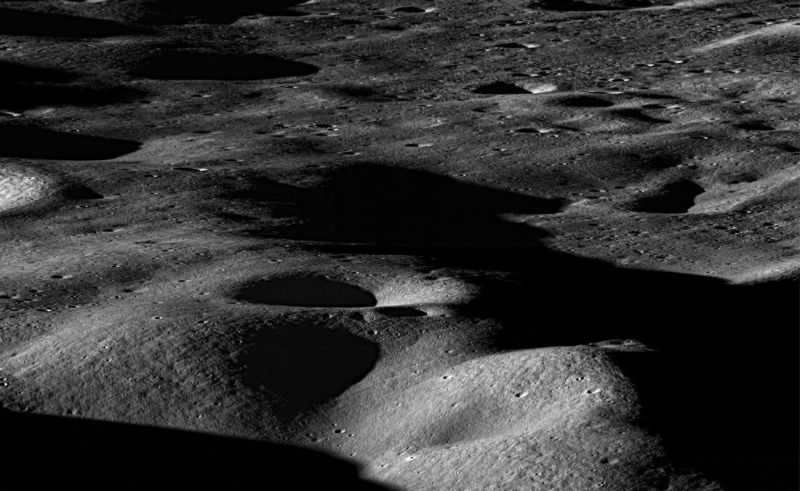
During the height of the Cold War, the United States and Soviet Union engaged in a struggle across many fronts—economically, politically, diplomatically, and more. As part of this they were competing for hearts and minds of nations caught between the two superpowers.
The Space Race in the 1960s was all about geopolitics. By accomplishing feats in space, Americans and Soviets were showing off the supremacy of their culture and scientific communities. Ultimately, landing NASA astronauts on the Moon offered the terrestrial world a huge statement on why the American way was better.
When the geopolitical imperative for this ran out, so did the money.
Human spaceflight is extraordinarily expensive. It is no coincidence that the only major human spaceflight initiative begun by NASA during the last 40 years that has survived is the International Space Station. It directly served a spaceflight purpose, sure—scientific research in microgravity, studying human health for long-duration space missions, and more. But critically, it helped foster ties between the United States and Russia considered important at the time.
Programs to send humans beyond low-Earth orbit are even more expensive, costing $10 billion a year or more. The reason why NASA’s Artemis program for lunar exploration has a very good chance to succeed where other programs since Apollo have failed—the Space Exploration Initiative and Constellation Program to name two—is because deep-space exploration is finally coming back into rhythm with geopolitical goals.
To put this bluntly, sending humans to the Moon now almost completely aligns with the strategic interests of the United States and its allies.
Rise of the Artemis Accords
Some geopolitical observers have already begun to characterize the global competition between the United States and China as a second Cold War, and even if this is not entirely similar to the original Cold War, there is a major economic, political, and diplomatic competition underway.
At the same time we are seeing a second space race, again back to the Moon, that offers some clarity on who is aligning with the United States and who with China.
One of the brilliant things that former NASA Administrator Jim Bridenstine did, in concert with associate administrator Mike Gold and Scott Pace at the National Space Council, was to firmly embed the Artemis program to return humans to the Moon within an international framework. Yes, NASA was going back to the Moon. But we were going back with allies at our side and a large coalition of nations. Advancing US space capabilities meant advancing the US geopolitical interests. Artemis was fundamentally different from Apollo because it would foster collaboration with private industry and international partners.
In 2020, Gold and Bridenstine unveiled the Artemis Accords. “We want to use the excitement around Artemis to incentivize partners to adopt these principles that we believe will lead to a more peaceful, transparent, safe, and secure future in space—not only for NASA and the international partners we’re working with, but the entire world,” Gold told Ars at the time.
These accords are a non-binding set of principles that establish basic norms, such as operating transparently and releasing scientific data in space exploration. But more broadly, the 29 signatories to the Artemis Accords have indicated they want to partner with the United States as it goes back into deep space, to the Moon, and possibly beyond. Among the most notable participants, from a geopolitical standpoint, is India, which signed on this summer.
The strategic overtones of the return to the Moon were emphasized on Friday when China announced the newest partner for its project to build a lunar research station on the south sole of the Moon: Pakistan.
Significance of taking sides
To back up, China’s “International Lunar Research Station” is the country’s answer to the Artemis program. Just as NASA intends to land astronauts at the south pole of the Moon later this decade, China, too, aims to establish a lunar base there for research and exploration purposes. Why the interest in the south pole? Because that’s where scientists believe there may be large deposits of water ice. So there is literally a race between the United States and China to the Moon, as happened six decades ago.
Russia was the first country to sign a “memorandum of understanding” with China, and since then, South Africa and Venezuela have also signed on to the lunar station concept. It’s a smaller coalition than the Artemis Accords, but the geopolitical lines are pretty clear.
Pakistan is a notable addition because of its historic rivalry with India—this may push India to align itself even further with NASA and the Artemis program. That would be a good thing for both countries, as India has a growing and ambitious space program.
Pakistan’s alignment with China is also emblematic of the increasingly frayed relationship between Pakistan and the United States. This was revealed by leaked documents earlier this year that suggested Pakistan would favor closer ties to China even if it meant further degrading its relations with the United States.
All of this means that Artemis is aligned with the strategic interests of the United States in a way that deep-space exploration has not been for six decades. The Apollo quest for the Moon unlocked large budgets and a national imperative for exploration success. Similar winds are now at the back of the Artemis program, which bodes well for future budget and space policy battles that are sure to come with delays and cost overruns.

